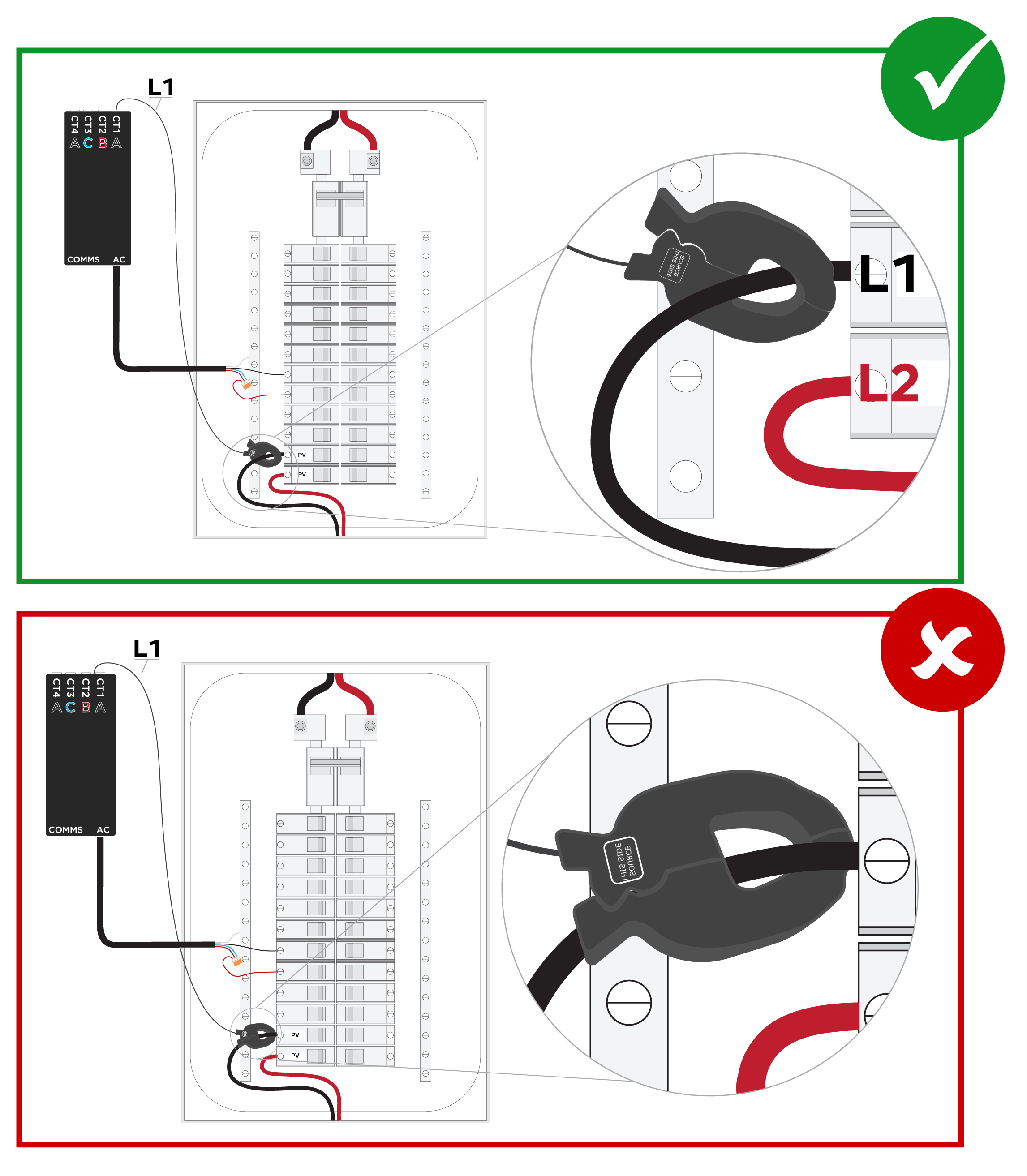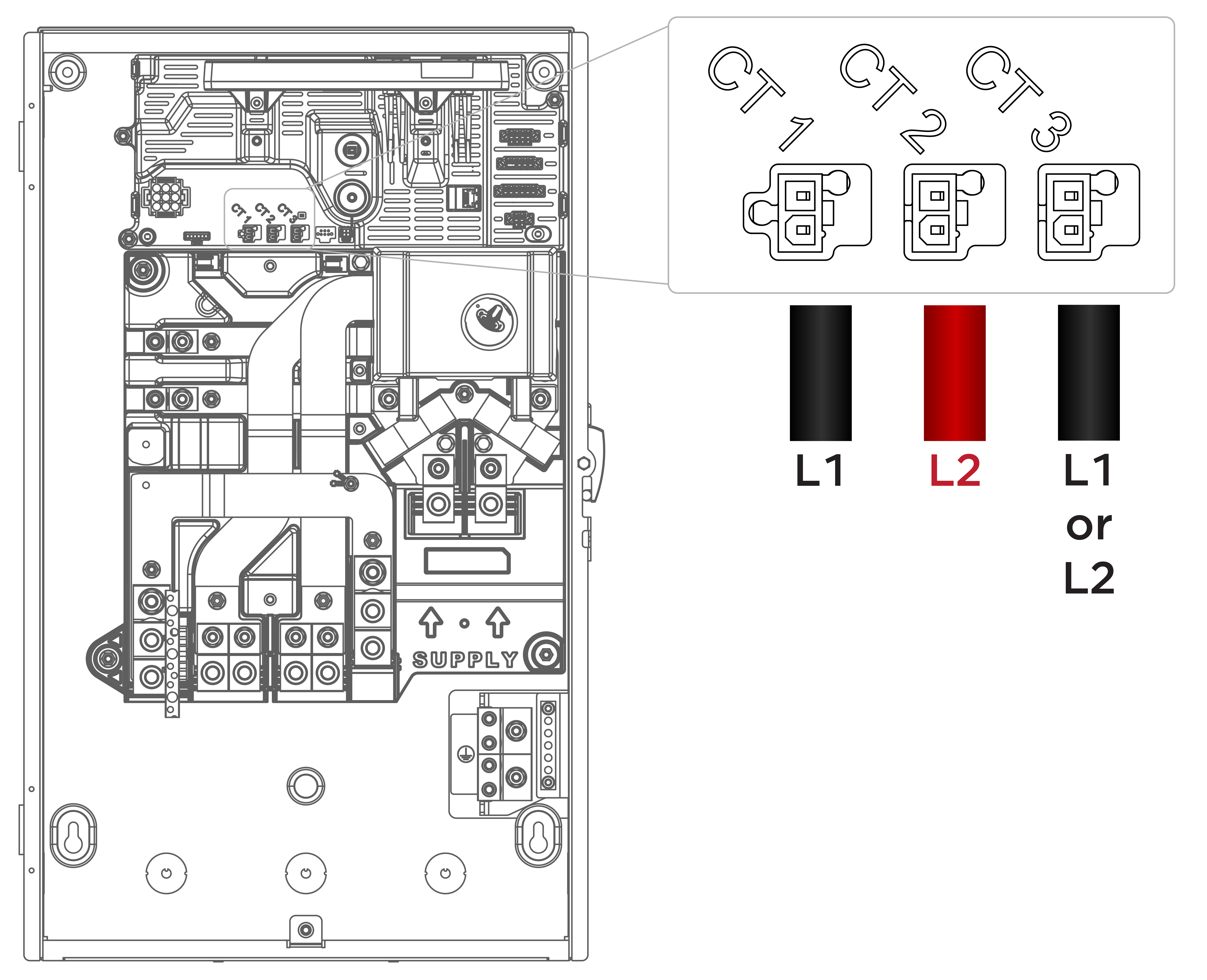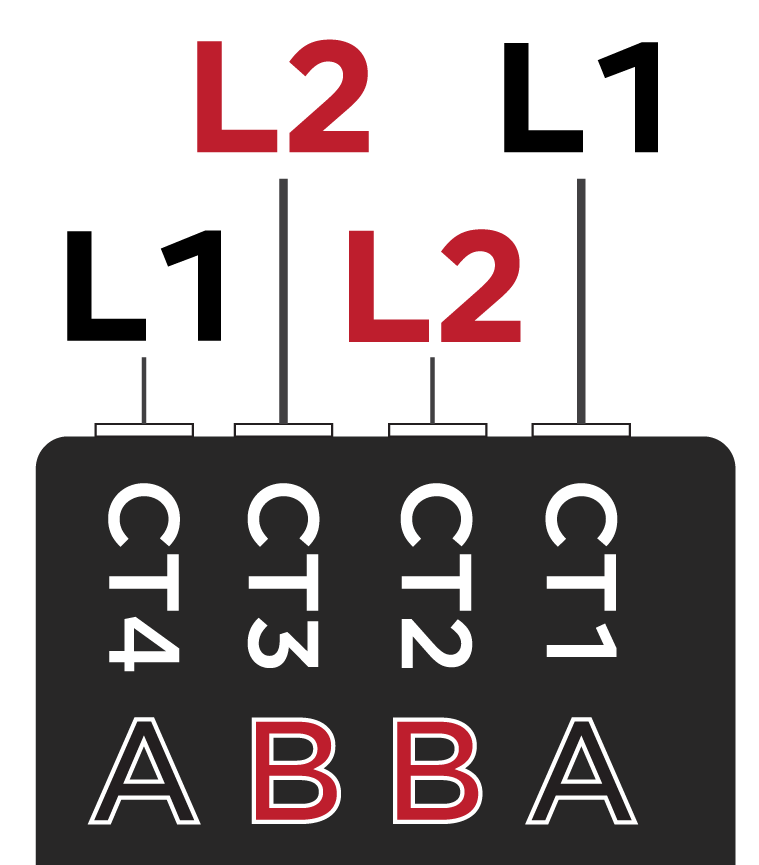Power Factor (PF) Not Close to 1
A CT displays Power Factor (PF) not close to 1, Site and Solar power flows are not representative of actual power flows, and/or negative loads are observed on the landing page
When verifying CT placement and location, it is worth checking the Power Factor read by each CT. When metering normal large residential loads such as a space heater, toaster, etc. the loads have predominantly resistive characteristics and a Power Factor close to 1. When testing with loads greater than 1kW and Power Factor is less than 0.8, it is possible there is a problem with the metering configuration. This method of troubleshooting is especially relevant on three phase systems, where a low Power Factor (e.g. ~0.5) may be a sign of a CT being on a different phase than its voltage reference.
Steps to Troubleshoot
- Ensure the meter voltage tap is near the measurement point
Refer to the following current transformer issues for troubleshooting steps:
- Gateway CTs and Neurio CTs are Overlapping
- Confirm the CTs are facing the
correct way:
- Locate the CT(s) used to measure the source that is displaying incorrect power flow readings.
- Verify the CT(s) are oriented such that the label is facing toward the source (away from the breaker).
- Confirm the CTs are measuring the
correct phase:
- Locate the CT on the Meter page in the Device Setup interface in Tesla One.
- Determine which phase the CT should be measuring.
- Verify the CT is measuring the correct phase.
- Ensure the CTs have been placed
in the correct location and are measuring the correct conductor(s):
- Verify the CT is clamped properly around the intended conductor(s).
- Verify the CT is not capturing
any other conductor(s).NoteIf a site has multiple inverter outputs and their conductors are being grouped, ensure every conductor is captured.
In the first example below, the CT captures the (3) L1 conductors for three solar inverters. In the second example, the CT captures (2) solar inverter conductors and (1) hot tub conductor, leaving the third solar inverter conductor uncaptured.
Figure 3. Solar CT Measuring all PV (top) and Solar CT Measuring Partial PV and a Non-Solar Load (bottom) 



